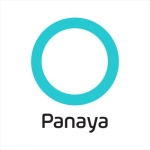We have a pretty strong emphasis on quality, so ALM is our gold source repository for quality. That's where we store everything, from requirements, test cases, defects, and all of the artifacts around certifying that quality is evident in every release, in every STLC product we produce.
The UI is terrible in the sense that we actually use automation scripts to avoid being in the UI, which is just fascinating, and then the data model.
I would say it's stable in the fact that it's up and it works. We have challenges with the data architecture. We're excited about Octane. It has some interesting capabilities, but it's our standard. We're used to using it, so I guess it's the things you want to enhance in it, we're just working through that process from that standpoint, but relatively it works.
We're already at enterprise scale, so it's used across the enterprise. I would say that we're at that point.
We invest very heavily on having strong domain and subject matter expertise, so we use support less. One of the things I would love to have is a pay-per-ticket model or a pay-per-patch model. I think that when we call support, it's either a defect or enhancement. It's not just, "Hey, I need customer support," because we're not novice users. We're on the high end of maturity so we're pushing the products in the spaces that I have very much through limits and it's really getting on their solutions and enhancements team.
From that standpoint we get good interaction. There's a really long cycle time though. That's my only disappointing thing around the support is that tickets tend to age, because they're enhancements. Enhancements have a longer cycle, you have to develop it, get it in a backlog, etc.
I have an entire team, so I'm a director and I have an entire tools team that does that. I did get involved in the planning and the strategy of how we're going to do it. My team said that first installation is relatively easy. When we go to upgrade and migrate, that's where there's pain.
Almost every customer will say the upgrades and migrations are very painful. They could be way easier. A lot of it has to do with having to upgrade the data, the in-place database or stand up in entirety, it's just cumbersome. It's very cumbersome and it takes a long time, longer than it probably should. That's a pain point that I think everyone has. Fortunately in our case, we've never had to call professional services to do it. I have a lot of customers say they couldn't get through the upgrade without it. Now, on the support side, it was really helpful, they were on the phone our first major migration for 72 hours.
It was great to literally be in that, "Hey, we're going through it," they were there the whole time, which was really awesome. We didn't have to involve professional services, but that was a good story to say, "Hey, they're on the phone with us. They're grinding it." So the whole 72-hour period we had someone from support cycle in. They did the hand-offs and all that stuff while our team was grinding off. So that was a good story there.
I think it's a great platform. It does a lot for us, but the fact that our users don't want to be in the application is weird. They'd rather work in a spreadsheet and then upload their results to the actual server. Now it could just be their behaviour pattern, but I think if it was a little easier for them to kind of work in, they would have an easier time with it.
Although on the plus side, the fact that it's open like that and you can just connect, maybe that's a positive too. So it's kind of a plus/minus. The UI they said, "Hey, I don't really like UI," but the fact that you can just upload your stuff from your work space, which could be a spreadsheet, it could be Eclipse, it could be a script that you're working in and it just directly uploads, they love that.
When you talk about easy use from an integration standpoint, definitely high marks there, but the UI is just something they really do not like. I personally, as the person who has to get all the data and metrics out of it, the data model is horrible. It's a constant complaint that I have. The new Octane platform kind of solves that. I just wish they had put some of that into ALM because the product marketing strategy is you have to have both.
Have a well-defined process, have a strong reporting structure, meaning in your process you want a lot of measurability. If you define your output, the reports and the questions you need to answer from what you're doing, which your process should be managing for you. In our company, we are very specific about what our executives and stakeholders want.
We have a very well-defined set of measurements that we have to take. We then put a process designed to ensure those measurements are always taken. That then allows you to deal with your outputs and your reporting structure, which then allows you to properly architect your tooling. The technology is very flexible. You have to decide as a client area how you really want to use it and that's going to start with what your business needs are the values that you're trying to get out of it.
That's the biggest advice that I have, it's not even on the technology. The technology will do great things for you if you have a plan and a structure and you know what you want it to do for you. Half the time they don't know, they want the tool to do it for them and it's the other way around. So that's what I advise people to do.
Think about it, have a vision, have a plan, tie that to outcomes, and measure those outcomes. If you're answering the right questions and asking the right questions, your technology will really enable you. You've got to look at it from that standpoint.


















Thanks for the information!